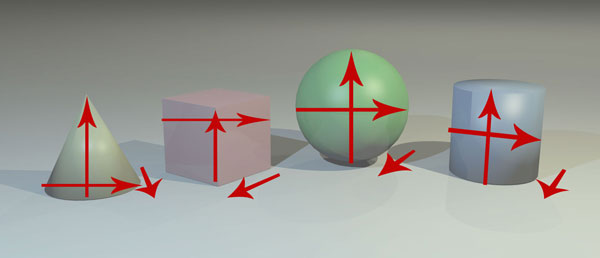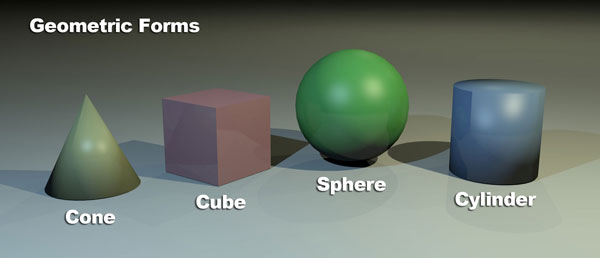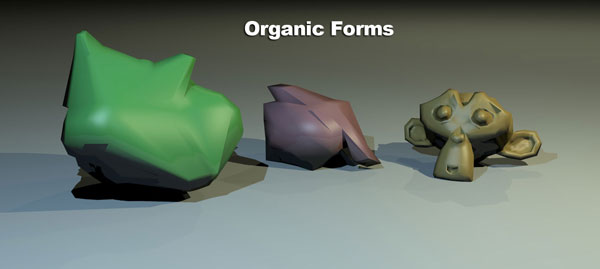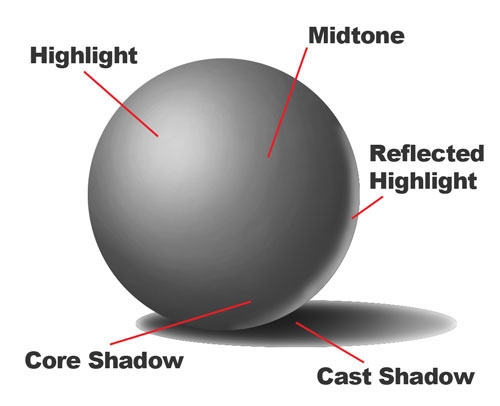By Matt Fussell
In terms of art, form refers to objects that are 3-Dimensional, or have length, width, and height. The world we live in made up almost entirely of forms. As artists, we must have a strong understanding of form and how to create the illusion of form in drawings and paintings.
Let's first take a look at the definition of form...
Form- an element of art, means objects that have three dimensions. I like to think of form as a 3-D shape

Geometric forms have specific names associated with them and are typically man-made.

Organic forms do not have specific names associated with them and are often associated with naturally occurring forms.

When drawing representationally, the goal is to create the illusion of form. We can create the illusion of form by understanding how light reacts on the object.

Light reacts on objects and is communicated to viewers through several factors. Adjusting these areas with values of the local color will result in the illusion of form in a drawing or painting.
The highlight is the area where light is hitting the object directly.
The midtone is the middle value of the local color of the object.
The core shadow is the area(s) that is shaded on the object.
The cast shadow is the area(s) that is shaded on surrounding objects and surfaces because of blocked light.
The reflected highlight is the area on an object that is lighter because of reflected light off of surrounding objects.
Here are some more art lessons that you may like...